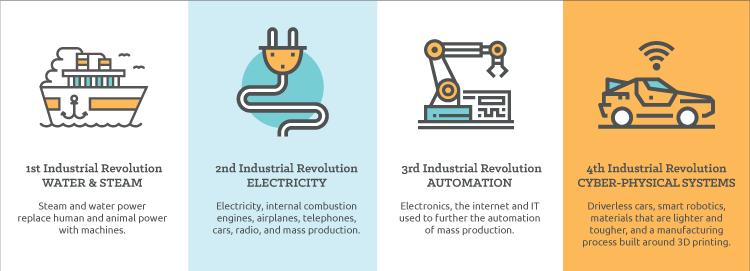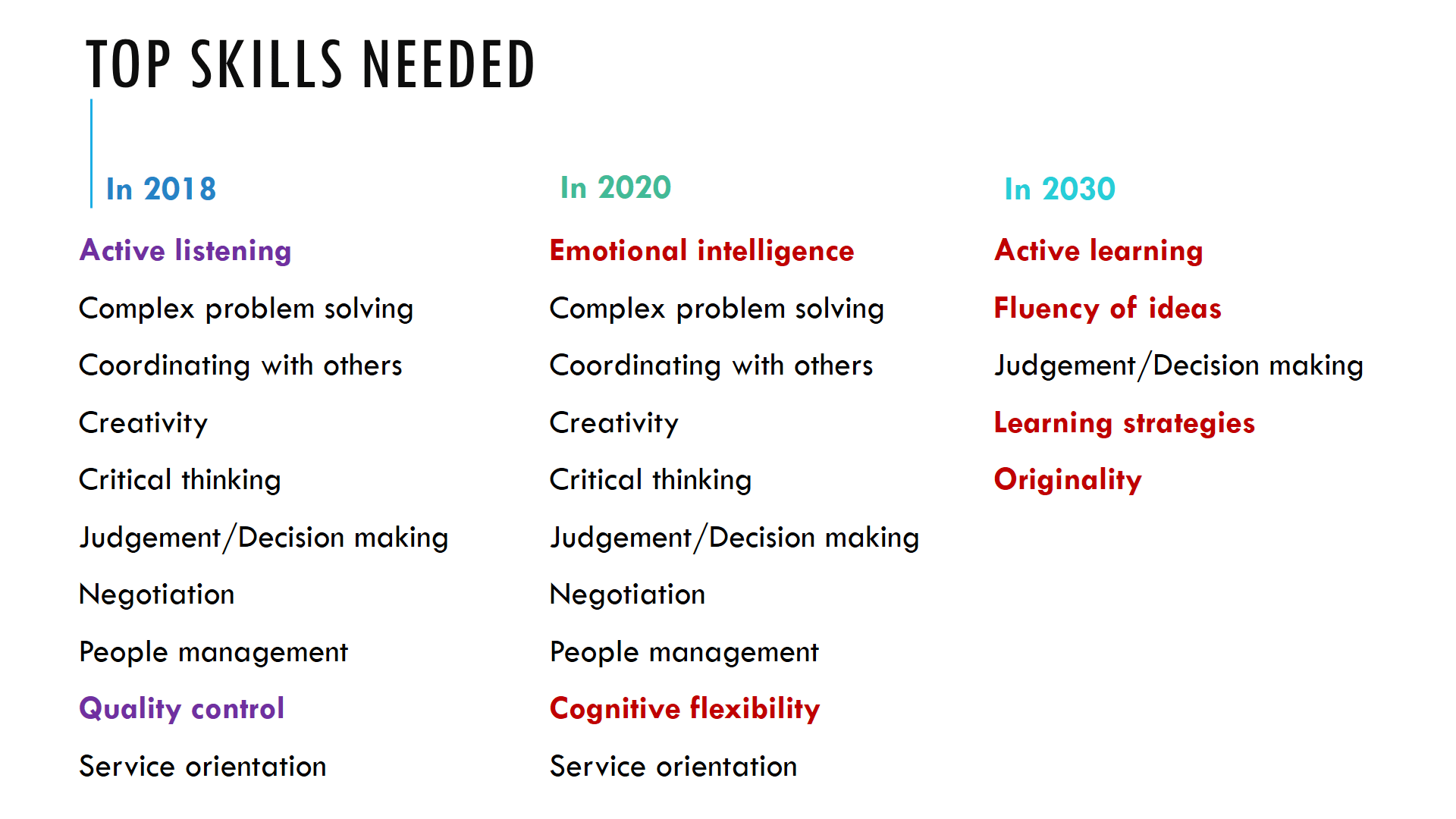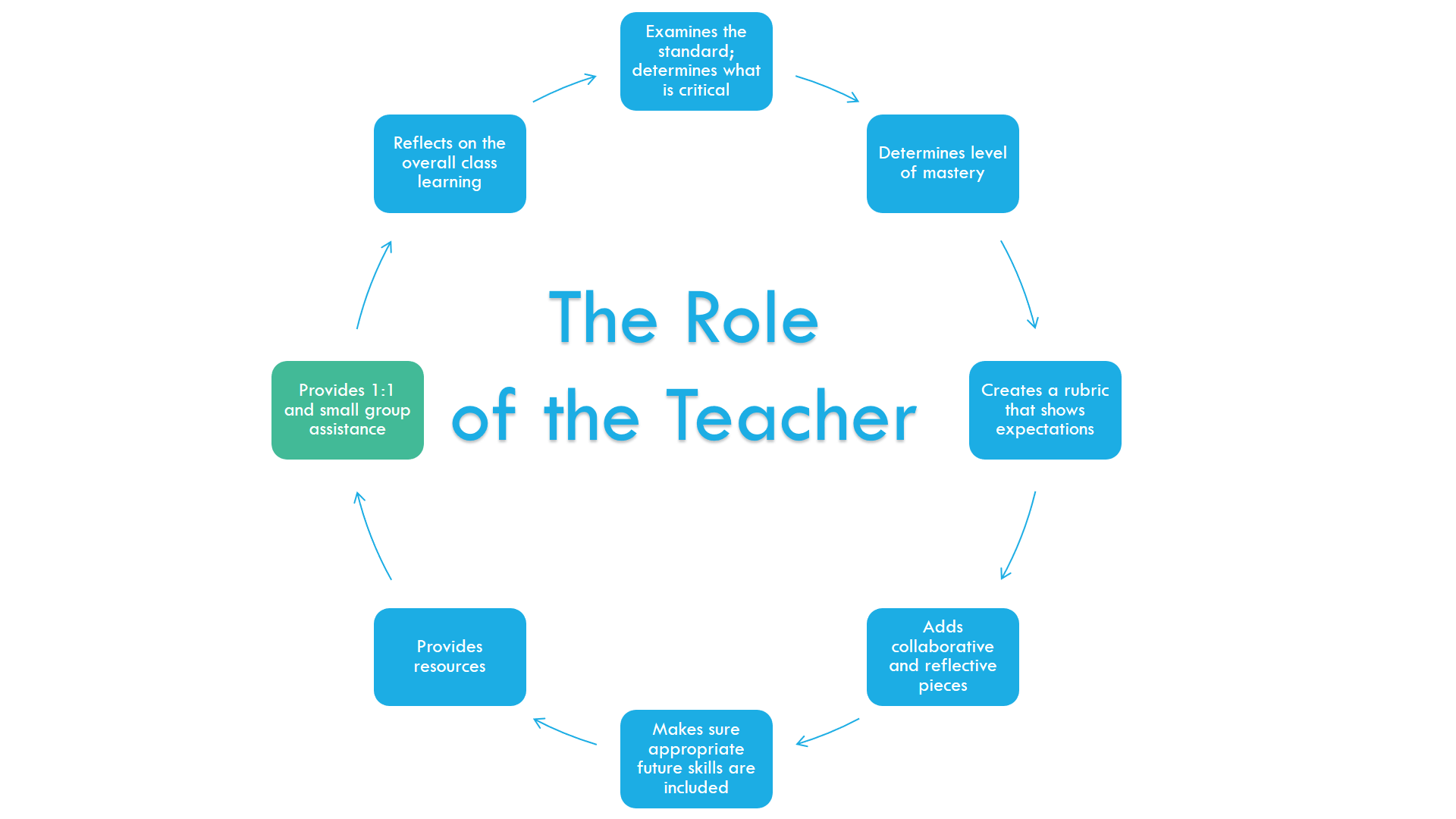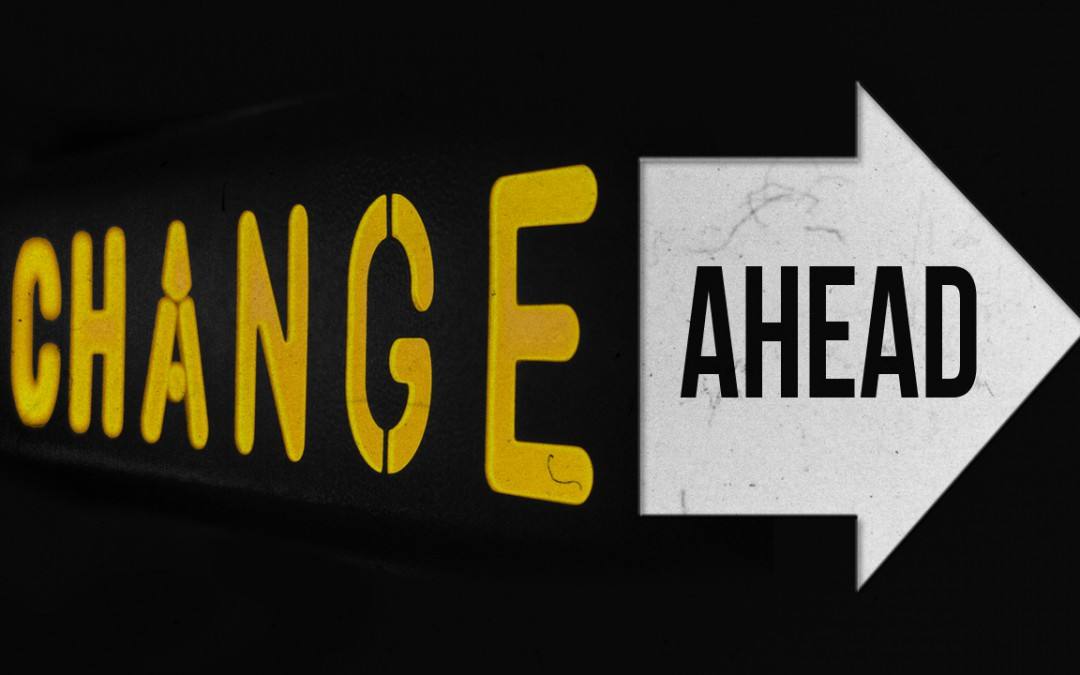The world is about to radically change. The advent of the next industrial revolution will completely alter our daily lives. In order for our society to be prepared, educators today must begin to define what “learning” truly is for our students and then change how we go about facilitating that learning in our classrooms.
The Revolutions
The Fourth Revolution alludes to the next major shift in how things are done. As you can see from the graphic below, the first industrial revolution was the use of water and steam and happened in 1784 with the first mechanical loom. The second industrial revolution started in 1870 as electricity was used to power the first assembly line. The third revolution happened in my lifetime as automation came into being with the invention of the first programmable logic controller in 1969. Each of these technological advancements brought in major changes for the lives of people around the world.

Source: https://www.linkedin.com/pulse/future-jobs-employment-post-fourth-industrial-revolution-tanmoy-ray/
And now we are on the cusp of the fourth revolution, one that experts predict could happen at any moment. This revolution will be the invention of cyber/physical systems and will hold such advancements as advanced materials, advanced robotics, artificial intelligence and machine learning, augmented everything, autonomous transport, and biotechnology and genomics.
So What?
That’s all exciting and great. But what does the fourth revolution have to do with rethinking learning? Well, actually, quite a lot. If at least part of the purpose of education is to prepare students for a successful career in the “real” world, then the fourth revolution will drastically alter both the job skills required and the jobs that will be available. (By the way, the whole discussion of the purpose of education today is a valuable one for educators to take part in at the campus and district levels. What are we trying to accomplish with our students? There is usually a wide variety of responses, many of which may be contradictory.)
In the illustration below, you can see what skills experts are predicting will be needed for this year, 2020, and 2030 in order to be hiraeble. Skills in red are new for that particular time frame. As you can see, those skills required by 2030 are radically different from those needed in earlier years.

Rethinking Learning
The new skills needed for our students to be successful require that schools right now begin to change. Many of our educators have begun the process of changing what teaching and learning look like in the classroom. But a faster and more synchronized approach is needed.
To enable students to master the skills and content that they will need, the process of teaching must change. Below is a representation of the steps that a teacher must go through now regularly in order to meet the needs of today’s students. Those items in blue are the ones that the teacher does in prior preparation and planning and without the students. Only the one in green is done with the students. This is very different from how teachers have taught in the past when the emphasis was more on what the educator did with students (the activities and content delivery) and little time was spent on the needed and detailed planning required.

The Teaching Process Revised
Here’s a little more detail about each of the steps in the teaching process above.
Step 1 (top center): The teacher examines the standard(s) and defines what the critical pieces are that all students must know. We all realize that there is no way for even the very best teacher to cover all of the standards that are included in our curricula. It is a mile wide and an inch deep. Therefore, either the school district or the teacher must examine each standard and determine what is absolutely critical for the students to know and what parts of the standard can be left out or considered as enrichment.
Step 2: The teacher determines to what level the students must demonstrate their knowledge of the critical pieces. Once the standard has been dissected down to its critical components, the teacher must define what mastery of those knowledge and skills looks like. This goes beyond setting a grading rubric, which can be confusing (What’s an 80 mean? Is this teacher’s 80 different from that teacher’s?) and happens next in the process. Instead, it goes to the heart of what it looks like when the student fully learns the critical pieces. Once defined, this is shared with the students.
Step 3: The teacher creates a rubric showing how student products will be graded based on the critical pieces. Now that the teacher has determined what mastery of the standard looks like, it’s time to create a rubric on how a summative assessment will be given for the product created by students to showcase their new learning. The rubric should reflect that students are allowed choice in what their final product looks like as long as it accurately portrays the learning that took place.
Step 4: The teacher determines if there will be a collaborative piece to the learning and what the reflective piece will be. Creating opportunities for students to collaborate, both with their peers and with experts, can be extremely beneficial to learning, depending on the content standard. At this step, the teacher decides if such a piece enhances the learning and how it will be structured. In addition, it is at this stage that the reflection questions are determined that will lead students to think about not only what they’ve learned, but also and more importantly, the process they used for that learning and how it might be improved.
Step 5: The teacher looks at a list of critical skills for future employment and ensures that the appropriate ones are included with the lesson. Ensuring that students have the opportunities to learn important skills for future jobs is the role of all teachers and not just those in CTE. At this point in the planning process, the teacher must look at a list of those skills and see if any of them can be strengthened in this particular unit of study. What job skills list is used does not matter as much as the fact that the teacher purposefully and regularly contemplates how job skills can be included in the lesson.
Step 6: The teacher provides resources for students to use in gaining the knowledge. The students will need access to a wide variety of resources to use in mastering the key concepts of the lesson. Whether this is print, audio, video, online, manipulatives, interactives, or technology does not matter. What matters is that the content is clear and appropriate for the students’ learning, that it offers choice in how students learn, and that it can provide the content without requiring teacher intervention. If the district provides an LMS (Learning Management System), then that makes it easier for the teacher. However, if no LMS is available, the teacher can still use Google Drive or OneNote or other online resources for content storage.
Step 7: The teacher provides 1:1 and small group assistance to those students who need it and helps all students to monitor and reflect on their own learning process. At this point, the teacher is finally working with students on the learning as all necessary planning and preparation has been completed. He/She monitors to see what students may need additional help or may want to go beyond what is required. If necessary, a direct teach for the entire class may be required if the content seems particularly confusing to the students.
Throughout the student work, the teacher must continually prompt students to reflect on what they are doing and what they are learning. Knowing how to improve what we do is not a skill we are born with, so it must be taught. The teacher points students to the reflection piece that he/she planned and has individual discussions with them about their reflections. This may very well be the most important step out of all of those in the learning process for the success of the students in their future.
Step 8: The teacher reflects on the overall class learning, his/her role in it, and what improvements to make for the next unit. Once the unit of study is done, it is time for the teacher to reflect. Keeping in mind what he/she learned from the student reflections and thinking about his/her own processes, the teacher can discover ways to continually prove the teaching and learning journey.
Rethinking Learning Requires Change and Time
While many educators are doing some of the above steps in the teaching process, very few have been given the time or training to do them all. This must be changed if we are to provide the first-class education that our students need to be successful in the new revolution. How will you do this?


Comments are closed.